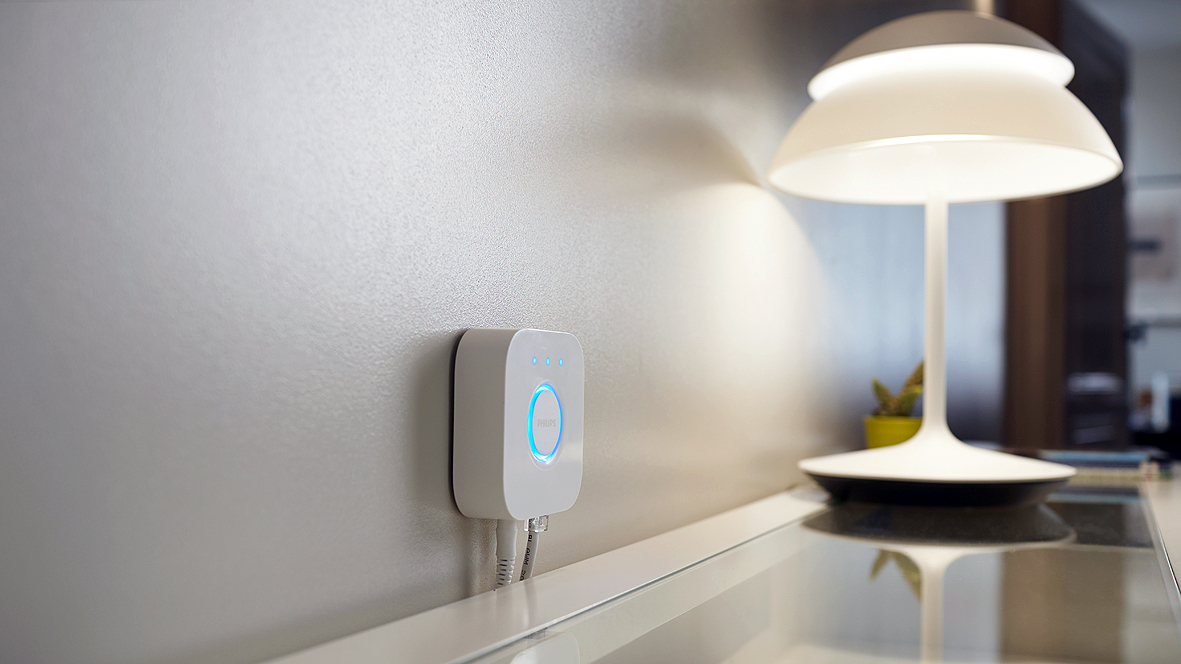TechRadar Verdict
A great introduction to smart lighting, and proof that the technology isn't just a fun novelty. Philips White Ambiance is easy to set up and control, and its adjustable color temperatures are genuinely useful. You'll need a Philips Hue Hub in addition to the bulbs, which raises the initial cost, but you can often find special deals that make the system good value.
Pros
- +
Easy installation
- +
Simple automation options
- +
Hue app makes it a child's play
- +
Versatile third-party integration
Cons
- -
Can be costly
- -
Requires Hue Bridge
Why you can trust TechRadar
Philips Hue is one of the biggest names in smart lighting, and it's particularly well known for its Color Ambiance bulbs, which let you take your pick from a palette of 16 million hues using a smartphone app.
However, fun thought that might be, few people want to turn their home into a nightclub on a regular basis, which is where Philips White Ambiance comes in. These bulbs offer clean, white light that you can set to different color temperatures to set a mood, wake you up, or help you wind down.
Like all Philips Hue lights, the White Ambiance bulbs require a Hue Bridge, which you can buy separately or as part of a starter kit along with two bulbs. The kit we were sent for review also contained a separate dimmer switch remote.
You only need one Bridge for your home, even if you have different types of Hue bulb.

Installation and Hue app
The installation process will vary depending on how you want your lights set up, but it's very straightforward. After putting up the bulbs in their respective holders, power them on from the mains to make them discoverable by the system. Then plug in the Hue Bridge to the mains and your home router and give it some space as it discovers the bulbs in your house.
Meanwhile, download the Hue app available both for iOS and Android smartphones. When we were setting our bulbs, the bridge discovered the bulbs quickly and easily.
Once the app is set up, it will ask you to connect to the Hue Bridge by holding down the big button on the Bridge. When your bulbs are discovered you’ll need to assign them to rooms, which allows you to control groups of them much more easily. With your bulbs assigned to rooms, the setup process is complete and you can now play around with the colors (shades of white, in this case).
It's a breeze to start using the system and control the lights through the app. The default home screen shows you your available rooms, allowing you to control all their bulbs as a group. You can tap on the switch to the right of the screen to turn them on to their last setting, but if you’re using the default settings you’re nowhere near using the Philips Hue bulbs to their potential. The real fun starts when you tap the room’s icon on the left of the screen, which allows you to customize the exact bulb color.
The easiest way to do this is with Philips’ pre-configured scenes, which range from ‘Energize’ (a cool white light) through to ‘Relax’ (a richer yellow hue).
We found ourselves relying mostly on the activity-specific defaults. ‘Energise’ was perfect for the mornings when the harsh white light worked well to blow away the cobwebs, while ‘Relax’ worked better in the evenings where we wanted our brains to wind down.
Of much great importance is the routines section of the app. From here you’ll be able to set the lights to automatically turn on and off when you arrive at, and subsequently leave the house, as well as allowing you to have the lights turn on and off automatically at different times.
By way of an example, we had the lights turn on to help us wake up in the morning, before automatically turning off when we left the house for work. In the evening we then had the lights turn back on when we arrived back at the house.
Additionally, the Philips lighting system is also compatible with Apple HomeKit, Google Home and Amazon Alexa. As far as controlling the lights from your smartphone is considered, the lights also support Google Assistant and users can control the Hue bridge just by saying keywords like “Turn up the lights” or “Turn off lights in Bedroom 1” and the Assistant will take care of everything else. This is also what makes the Hue app such a great addition to the physical hardware system.
Current page: Introduction, setup and app
Next Page Third-party integration, daily use and performance- Siddharth Chauhan is the Consumer Technology Reporter at Digit India. He used to work as an Assistant Editor at TechRadar India

